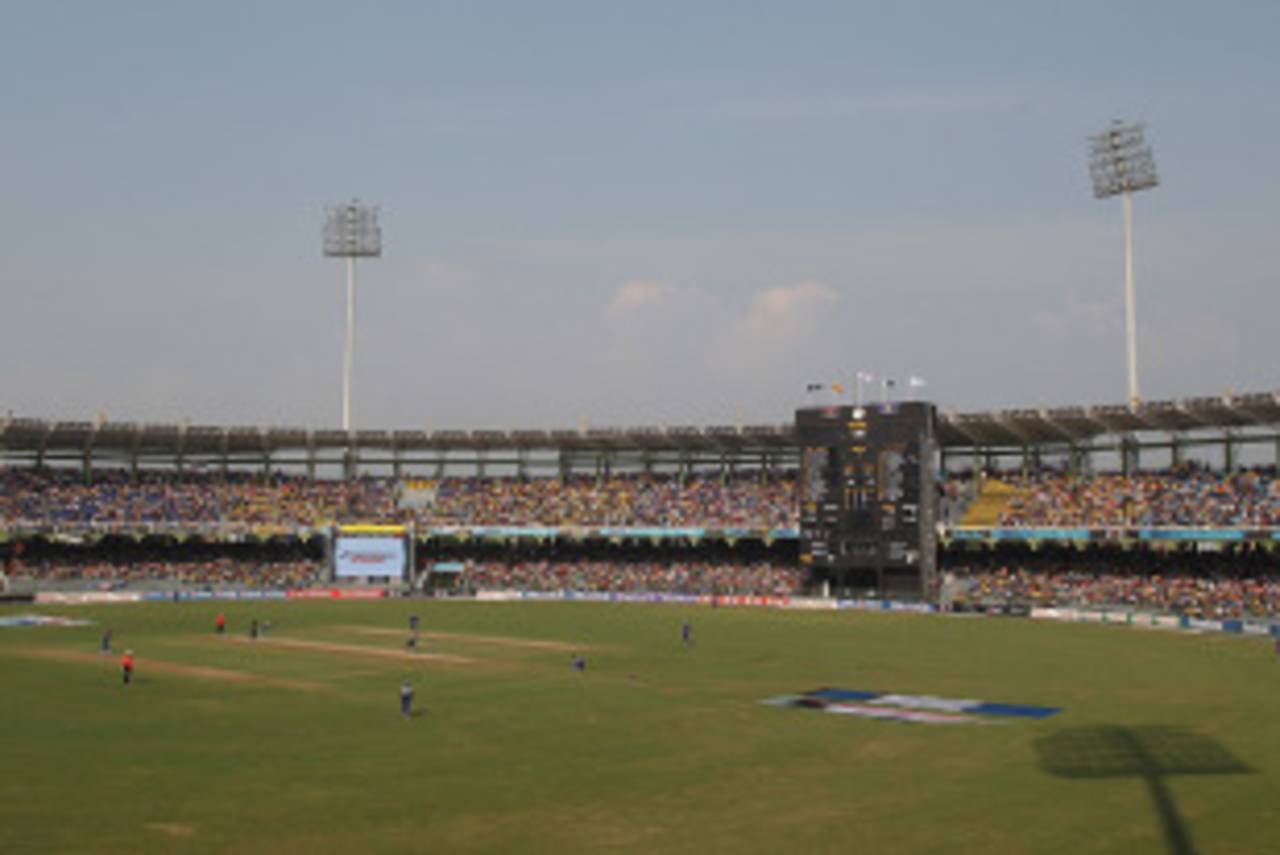On first look, the R Premadasa stadium doesn't seem to be the ideal venue for the knockout games of a tournament as big as the World Cup. Or any day-night ODI for that matter. Far too often are the odds stacked heavily against sides chasing under the floodlights, when the ball starts doing the kind of crazy things it hadn't in the first half of the game. In the last decade, 29 out of the 38 finished games featuring the top teams here were
won by the team winning the toss, second only to Newlands in that aspect. There is no guessing what teams do here the moment they win the toss.
With the World Cup, however, like many other aspects in quite a few of the other stadiums in the subcontinent, there seems to have been a massive improvement. Already it is there for all to see that while chasing might not be the favourite thing to do here, it is not quite the devil either. Even if the games involving the minnows in this World Cup are not to be included, the league
game between Sri Lanka and Pakistan is a big indicator. In the good old days of the Premadasa, Pakistan's 277 would have been a difficult target, but Sri Lanka seemed to be on track until they lost their way towards the end.
The most important thing, both in that game and Pakistan's successful
chase against Australia, was that the new ball didn't jag around as much as it used to do in the classical Premadasa-under-the-lights days. Anuruddha Polonowita, Sri Lanka's chief groundsman, has an explanation for why this used to happen and why it is less likely to happen now that the square has been relaid.
"We have raised the pitch three-and-a-half-feet from the perimeter of the boundary," Polonowita said. "Earlier we had a problem those days. This is a low-lying area. This was a marshy land, which was filled with garbage. So in the evening we used to get a little bit of moisture coming out. So we raised it by three-and-a-half feet, and I think it has settled down now. In the evening, that moisture is not coming out. That was the main reason [for the drastic change in conditions under lights]."
Mahela Jayawardene, who has played a fair amount of his ODI cricket here, has another reason. "The floodlights were one of the reasons teams struggled to chase at night at the ground, as they couldn't pick the ball on occasion," he wrote in his column. "Since the revamp, with new lights and a relaid track, things have certainly eased out."
Trevor Bayliss, Sri Lanka's coach, shares the view. "In the past it [the toss] has been important," Bayliss said. "The wickets since have been relaid. They are a lot better now, a lot easier to bat second than it was two to three years ago. We batted second against Pakistan, and made 260, but we had a bad 20 overs. Whatever score is made in the first innings, the team batting second is quite capable of knocking those runs off.
"Whether it gets a little bit cooler and atmosphere makes the ball move around a little bit, there is no real evidence of that. It is a bit more difficult to bat second. I think the wicket probably slows up a little bit, makes it more difficult for batting, but more than anything it's the mindset. We were happy to score 260 runs against Pakistan in that first game. Even though we did lose, we knew there was improvement, and it gives us confidence for this game."
A target of 225 and over against a major opposition in a day-night game at the Premadasa has been a fortress that has not been conquered often, but over the next week or so that frontier might be no more. Even if that doesn't happen - although it will be a great stage to do so in a knockout game of a World Cup - the players are a bit more assured of the fairness of the conditions.
